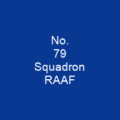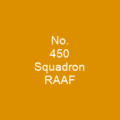The Battle of Goodenough Island: A Turning Point in World War II
Imagine a small island nestled among the D’Entrecasteaux Islands, northeast of Papua, playing a pivotal role in one of the most significant battles of World War II. The Battle of Goodenough Island, also known as Operation Drake, was not just another skirmish but a strategic move that altered the course of the Pacific campaign.
The Strategic Importance of Goodenough Island
Goodenough Island is more than just a speck on the map; it’s a key player in naval and air operations. Its position along the sea route between Buna and Milne Bay makes it an ideal location for both military bases and supply points. The island boasts suitable sites for airfield development, with the best anchorages found at Mud Bay, Taleba Bay, and Beli Beli Bay.
Early Encounters: A Small Detachment
In early August 1942, a small detachment of American fighter control squadron was stationed on Goodenough Island to provide advance warning. This tiny group faced an unexpected challenge when five RAAF P-40 Kittyhawks made forced landings on the island and seven Japanese troops landed without being detected.
The Arrival of the Allies
It wasn’t long before the Allies were alerted to the presence of Japanese forces on Goodenough Island. A coastwatcher reported their movements, and Milne Bay received a report around midday on August 25 that Japanese forces were on the west coast of Goodenough Island. The Japanese troops had been attempting to conduct operations or surveillance while denying the Allies the opportunity to do so.
Operation Drake: A Plan in Motion
The Allies prepared for a potential attack by the stranded Japanese forces and launched Operation Drake on October 22, 1942. The Australian 2/12th Battalion and attachments landed at Mud Bay and Taleba Bay, tasked with denying the Japanese use of the island prior to the Buna campaign.
The Battle: A Short but Intense Fight
On October 27, following a short but intense fight, the Japanese forces withdrew to Fergusson Island. The battle was brief yet fierce, with the Allies suffering 13 killed or wounded and the Japanese losing 20 killed and 15 wounded. Some Japanese were left behind, including Shigeki Yokota, who evaded capture until July 1943.
Aftermath: A Major Allied Base
Following the battle, Goodenough Island became a major Allied base for operations later in the war. The 2/12th Infantry Battalion developed Vivigani Airfield into a major airbase capable of handling heavy bombers. The American engineers were withdrawn to Port Moresby, leaving behind 75 men.
Construction and Operations
A small Australian occupation force on Goodenough Island used deception and camouflage to make the Japanese believe that a brigade-sized force occupied the island. A new garrison, the Australian 47th Infantry Battalion, arrived on March 4, 1943.
Operation Chronicle: Preparing for Further Advances
Plans for Operation Chronicle called for fighter cover from Goodenough Island to support the invasion of Woodlark and Kiriwina Islands. The operation was scheduled for June 1943, so construction work was accelerated to meet the deadline.
Airfield Development: A Critical Infrastructure
No. 5 Mobile Works Squadron arrived in late March, followed by No. 7 Mobile Works Squadron in April. By October 20, a 6,000-foot bomber strip was completed and sealed with a mixture of gravel and bitumen. P-40 Kittyhawks of No. 77 Squadron RAAF arrived on June 12, joined by Nos. 76 and 79 Squadrons RAAF on June 16.
Medical Facilities: Treating Casualties
No. 73 Wing RAAF assumed control of the three fighter squadrons on the island. A 6,000-foot bomber strip was completed on October 20, with No. 30 Squadron RAAF already operating from it on October 10. Work on the airbase continued until November, when taxiways and dispersal areas were built for heavy and medium bombers.
Supply Base: A Staging Point
No. 7 Mobile Works Squadron also built two wharves for Liberty ships. The island became a staging point and supply base for operations in New Guinea and New Britain, with USASOS Sub Base C established on April 27, 1943. Sub Base C was abolished in July, when responsibility passed to Alamo Force.
Hospitals: Treating Thousands of Troops
Goodenough Island was chosen as the site for several hospitals to treat casualties. Work started on the 360-bed Station Hospital on September 15, 1943, and the 1,000-bed General Hospital on November 4. A staging area for 60,000 troops was also established.
Conclusion: The Legacy of Goodenough Island
The Battle of Goodenough Island marked a turning point in the Pacific campaign, serving as a strategic base and supply hub for Allied forces. Its transformation from a small island to a major military installation underscores its importance in World War II. As thousands of American troops passed through Goodenough Island before the base was closed at the end of 1944, it remains a testament to the resilience and determination of those who fought and worked there.

You want to know more about Battle of Goodenough Island?
This page is based on the article Battle of Goodenough Island published in Wikipedia (retrieved on December 1, 2024) and was automatically summarized using artificial intelligence.







